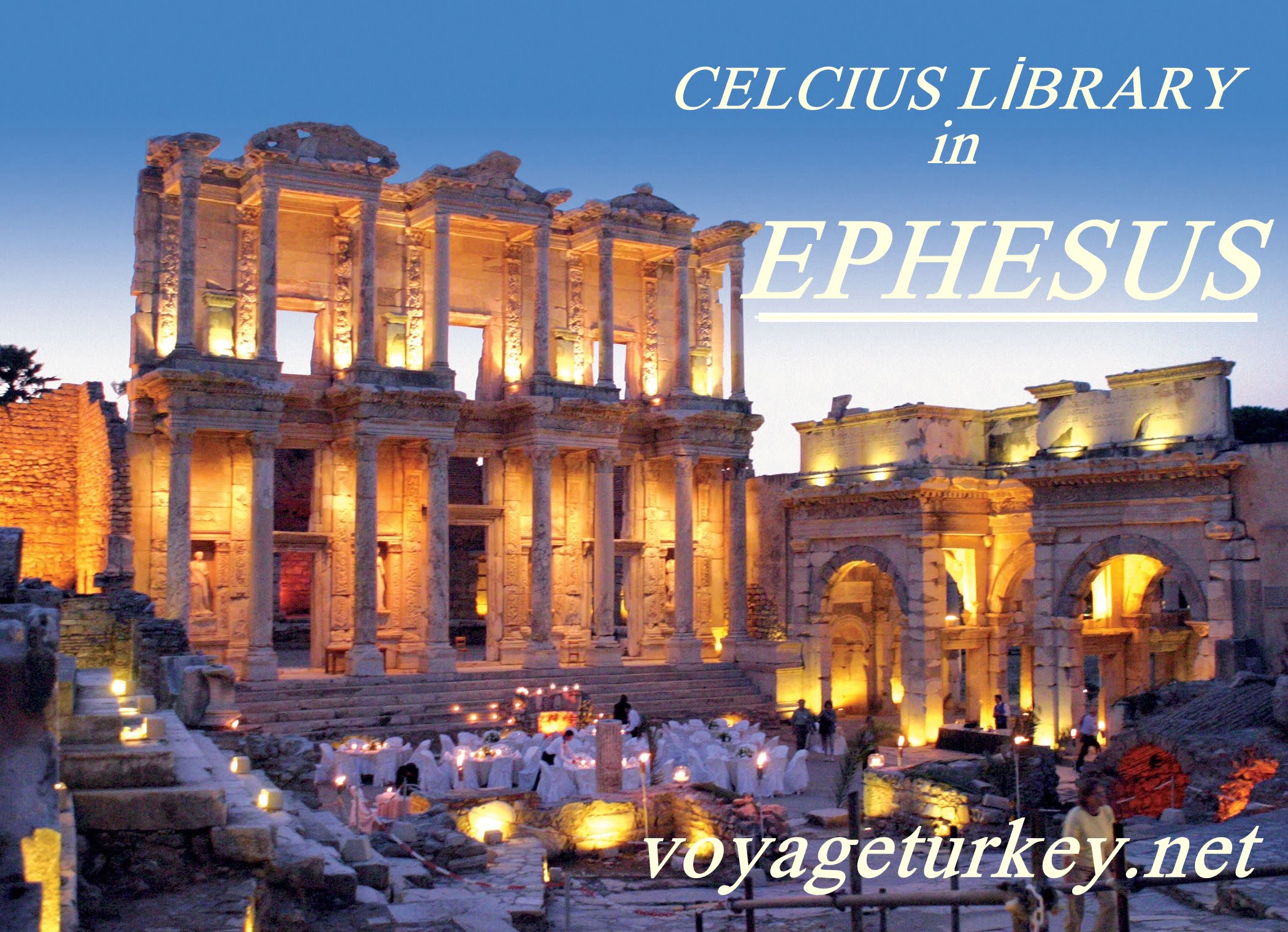The Celsus Library, one of the most important buildings of the Ancient City of Ephesus, was built in 135 AD by Gaius Julius Aquila in honor of Tiberius Julius Celsus Polemaeanus, the proconsul of the Asian Province of the Roman Empire.
The library was the third-largest in the world in the Classical Period after the Alexandria Library in Egypt, and the Pergamon (Bergama) Library in Anatolia. It is estimated that there were between 9,500 and 12,000 books in the library at that time.
The architect of this library, which is one of the most famous buildings of Ephesus, is Vitruoya, one of the most important architects of the Roman Empire.
The Celsus Library is located in a small area south of the Agora in the ancient city of Ephesus. The library is connected to the Agora through the gate of Augustus. It also forms a great unity with the theater next to it.
Known as the third largest library from In an inscription on the right side of the door on the eastern facade of the building “For the Asian proconsul Tibernus Julius Celsus Polemaeanus, his son consul Tiberius Julius Celsus Polemaeanus founded the library building of Celsus with his own fortune, along with all the decoration, works of art and books.”
This caused historians to think that the structure was built as a library because it was not possible to build such a structure in the center of the city, although it was originally intended to be built as a monumental tomb. According to this idea, the monumental tomb of Tiberius Julius Celsus Polemaeanus was built in the center of the building and a library building was built on it.
A sarcophagus still exists in the library. Below the library is the burial chamber of the sarcophagus of Celsus Polemaeanus. According to the researches, this sarcophagus belongs to Julius Celsus Polemaeanus.
The most impressive part of the two-storey structure is facade which is 17 meters high and 21 meters wide.
Photo: Ephesus Guide, 2000.
The facade, which is made of marble, has a magnificent appearance especially with the first light of the morning. The decoration on the front of the structure, reflecting the architectural features of the Roman Period, is one of the most beautiful examples from that time. The facade of Library is consists of indented architectural elements such as niches, pediments and columns.
There are three doors on the front facade and three windows on these doors. Statues are placed in framed niches on the right and left of the entrance doors. On the front of the entrance wall, there are 4 female statues representing intelligence, virtue, knowledge, and understanding. The originals of these statues, hidden between large columns, are now exhibited in the Vienna Museum. Today, the statues standing on the exterior of the Library are copies made according to the molds taken from the original statues.
The statues symbolize the virtues expected of a Roman high-ranking official. From left to right, wisdom, character, reasoning, knowledge and experience.
Statue of Sophia (Goddess of Wisdom).
The statue of Julius Celsus Polemaeanus is on display in the Istanbul Archaeological Museum.
The library’s three entrances and the narrow space in front of it open to the reading room. The hall of the library is entered by climbing 9 steps after a marble courtyard.
The library was destroyed during an earthquake around AD 270 and was not rebuilt. The building was restored with the restoration work started in the 1970s by Archaeologist Strocka and architect Hueber of the Austrian Archeology team.
